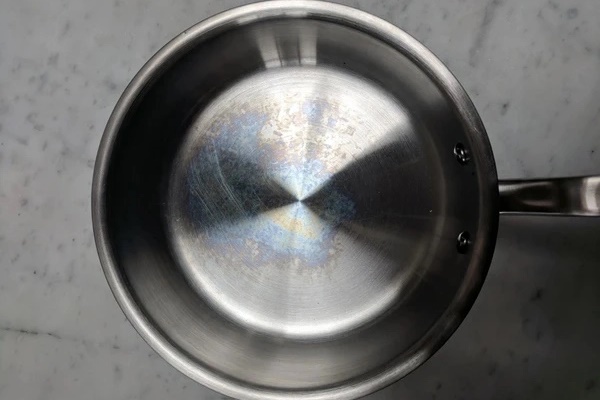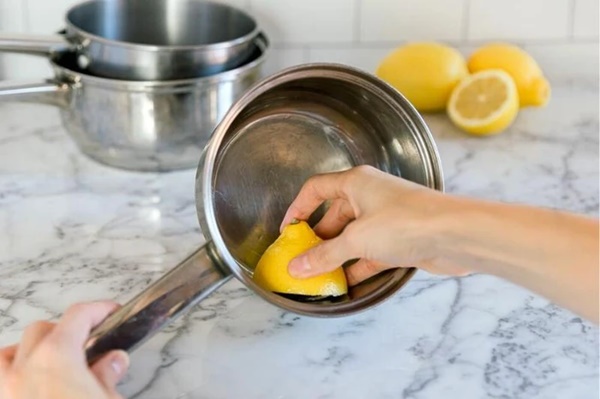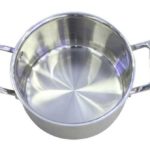Rainbow colored streaks, also known as multicolored streaks, are often found at the bottom of stainless steel pots and pans. Even when they are cleaned, they still appear, causing concern for many people. Housewives wonder if these streaks are a sign of contamination in the pots and pans. Or do they appear because the pots and pans are made of cheap, low-quality materials? Can rainbow streaks affect health?
 According to the Times of Malta, this is a completely normal phenomenon. It does not affect the quality of the food or the health of the users of stainless steel pots and pans. Scientists have named these rainbow streaks as the “heat tint” phenomenon.
According to the Times of Malta, this is a completely normal phenomenon. It does not affect the quality of the food or the health of the users of stainless steel pots and pans. Scientists have named these rainbow streaks as the “heat tint” phenomenon.
The reason is that stainless steel pots and pans are usually made from stainless steel. This type of steel usually contains a small amount of chromium to prevent rust and corrosion. When chromium comes into contact with air, it creates a protective layer.

Scientists have named these rainbow colored streaks as the “heat tint” phenomenon. (Photo: Times of Malta)
Stainless steel, when heated at high temperatures, thickens the oxide layer and creates the rainbow streaks. This phenomenon can also occur at high temperatures that make the pots and pans heat up quickly. These rainbow streaks protect stainless steel pots and pans and do not harm human health.
Many people wonder if chromium is toxic, but in reality, chromium is very difficult to oxidize in the form of Cr6+ (a toxic compound). Although not harmful, many people believe that rainbow streaks make pots and pans lose their aesthetic appearance. Users can use vinegar to clean these streaks.
There are 2 ways to remove rainbow streaks on stainless steel pots and pans.

Using lemon can help remove rainbow streaks on stainless steel pots and pans. (Photo: Times of Malta)
Method 1: Use diluted white vinegar in a 1:5 ratio and pour it into the area where the streaks appear, leaving it for 10-15 minutes. Or you can use a sponge soaked in vinegar to gently clean these rainbow streaks. Then, rinse with clean water and dry the pot to complete the process.
Method 2: Use half a lemon directly on the streaks and then rinse with water.
According to Phụ Nữ Việt Nam
Transforming cooking pots: Dr. Expert shows you the way to choose top-notch, safe stainless steel pans
 steel pans’>
steel pans’>Inox possesses a unique surface property that offers limited opportunities for the infiltration of bacteria and mold, making it easy to clean. Dr. Vu Thi Tan, a lecturer in Inorganic Chemistry at the University of Technology, suggests using it and provides guidelines on how to select high-quality products.

































